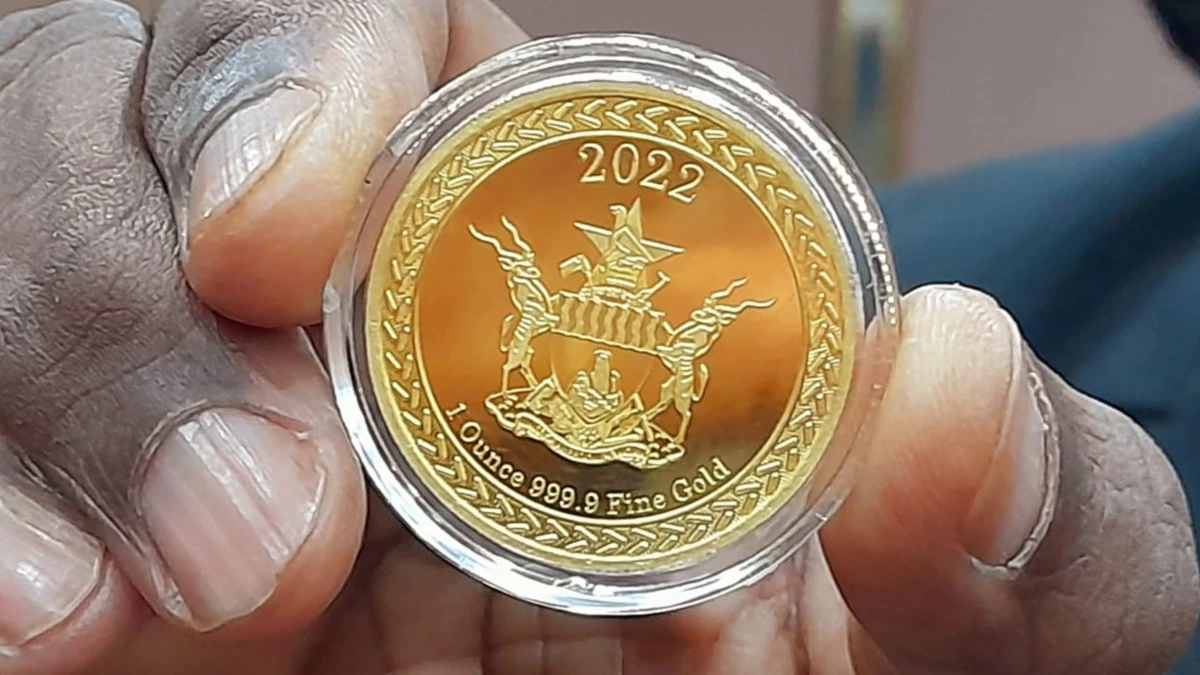
Victor Bhoroma Zimbabwe is currently undertaking critical infrastructure projects such as the Harare-Beitbridge highway, the Mbudzi Interchange, the Gwayi-Shangani dam, the Kunzvi-Musami dam and a number of other projects. A 2019 report by the African Development Bank (AfDB) pointed out that Zimbabwe needs over $34 billion in the next 10 years to upgrade its infrastructure to achieve sustainable levels of economic growth.
This means that the country would need to invest $3,4 billion each year up to 2030 to keep up pace with developments on the continent especially with fast developing peers in the Sadc region such as Mozambique and Zambia. The Zimbabwe government points out that it needs at least US$40 billion to fund critical infrastructure in the next five years. The 2022 national budget set aside ZW$334,7 billion for capital expenditure such as infrastructure financing. By June 2022, ZW$141,4 billion had been disbursed for road and dam construction among other projects. The government spent an additional ZW$172,6 billion on projects, taking the total capital expenditure outlay to ZW$507,3 billion for 2022.
Source of infrastructure funding
Most of the above projects are funded from tax revenues and disbursements done partially in the domestic currency. The government plans to issue a US$100 million bond on the Victoria Falls Securities Exchange (VFEX) to help fast track some of the projects that have been delayed by funding such as the Gwayi-Shangani Dam. However, there has been massive criticism of the short-term financing model used by the government for ongoing developmental projects due to the impact of the large volumes of payment on the wobbly foreign exchange market and the subsequent depreciation of the local currency which remains very volatile.
Due to that depreciation and lack of confidence in the local unit, infrastructure contractors rush to the parallel market to exchange their Zimbabwean dollar payments to foreign currency the moment they receive their payments as a way to preserve value. To ensure stability for the local currency while meeting short-term infrastructure needs, there is a need for long-term financing models in infrastructure development, especially those that are self-financing in nature.
Need for private partnerships
Zimbabwe does not have a dedicated Public Private Partnership (PPP) law. In 2004 the government developed the PPP Policy and Guidelines, but this did not translate into a binding legal and regulatory framework. Without such regulations, investors and financial institutions cannot take risks to finance PPP projects locally considering the monetary policy inconsistencies, Institutional decay (property rights flaws and tainted rule of law), bureaucracy and high levels of corruption in government. In the past five years, monetary authorities have announced a plethora of contradicting regulations, policies and statutory instruments that erode confidence in potential financiers.
The AfDB (2018) report explicitly points out that an inappropriate regulatory framework limits private sector participation in infrastructure funding in Zimbabwe. Under PPP projects, the financial, technical, and operational risk is borne by the sponsor of the project hence PPPs do not contribute to public debt or draw from tax revenues.
- Chamisa under fire over US$120K donation
- Mavhunga puts DeMbare into Chibuku quarterfinals
- Pension funds bet on Cabora Bassa oilfields
- Councils defy govt fire tender directive
Keep Reading
History of PPPs in Zimbabwe
Notable PPP projects in Zimbabwe since independence include the current US$300 million Beitbridge Border Post Upgrade by Zimborders under an 18-year Build-Operate-and-Transfer Arrangement, the 1994 Alfred Beit Road Bridge constructed by New Limpopo Bridge under a 20 year Build-Operate-and-Transfer (BOT) arrangement at a total cost of $18 million. Other PPP projects that were successfully undertaken include the 800km stretch of the Plumtree to Mutare highway done at a cost of US$206 million in 2014 (implemented by Group Five of South Africa with funding from Development Bank of South Africa (DBSA), the $600 million Chisumbanje Ethanol Plant Project by Green Fuels and Arda implemented in 2013 and the US$65 million Beitbridge Bulawayo Railway (BBR) line which was implemented on a BOT basis by Beitbridge Bulawayo Railway (Private) Limited in 1999 on the 317 km railway. Despite these successful examples, PPPs have been evading Zimbabwe in a worrying trend due institutional flaws that must easily be addressed to ensure sustainability.
All the above PPP projects were successful because financiers were satisfied with the repayment model (self-financed by users) and the foreign exchange regulations that bound the contract. On the domestic market, pension funds sit on over US$650 million of foreign currency that can be utilised on infrastructure projects provided policies and the law can guarantee uninterrupted return on investment. The same applies to financial institutions who can easily secure offshore funding and synergies from external financiers provided there is an enabling environment. It has been noted that local financial institutions lack sufficient capital to fund infrastructure, however capital flows to where the environment is favourable and there are guarantees for repayment.
Complex project coordination
Zimbabwe does not have a dedicated PPP unit, which means that implementation is done by the Ministry of Finance with collaboration from various government agencies and departments involved. This makes it difficult to get traction on projects that fall under various ministries or departments such as Dam and Water Projects in towns where the financing model falls under the Ministry of Finance and Economic Development, users fall under opposition controlled urban councils which are administered by the Ministry of Local Government and Public Works, water resources fall under the Ministry of Lands, Agriculture, Water, Climate and Rural Resettlement through the Zimbabwe National Water Authority (Zinwa), guarantees to repayment coming from the Reserve Bank of Zimbabwe (RBZ) among other agencies that will be involved. This makes the execution of PPPs in Zimbabwe complex, prone to corruption, political interference and bureaucracy.
Corruption has been rampant in PPPs agreements to a level where some projects had to be abandoned while project costs skyrocketed to cater for many pockets involved. Additionally, utilisation of public infrastructure through payment in an unstable domestic currency and lack of a market driven foreign exchange market dent any hopes for private sector funding in infrastructure projects.
Need for political commitment
Long-term infrastructure financing requires high level government leadership commitment before and after implementation since the private players incur operational and financial risks in these long-term contracts. PPPs require clarity on policy and legal framework before the private sector can commit millions of dollars into public projects. Zimbabwe has been at pains to separate economic policies and politics in the last four decades to the detriment of infrastructure development.
Government justification
The government points that it is unlike other African economies such as Zambia, Mozambique, Ghana and Kenya who are securing huge chunks of loans for infrastructure development from international partners, Zimbabwe does not have that privilege as the country has been shut out of debt markets due to nonpayment of debt and arrears running into billions. As of June 2022, public and publicly guaranteed debt stood at ZWL$1,3 trillion and US$13,2 billion, composed of domestic and external debt, respectively.
Harare has external arrears to multilateral and bilateral institutions such as the World Bank, The Paris Club, the African Development Bank, and the European Investment Bank. As a rule, institutions such as the International Monetary Fund (IMF) are prevented from lending to a country that has arrears to other international financial institutions. Similarly, other potential funders are wary of extending any loans to Zimbabwe without resource-based collateral.
Way forward
Any potential infrastructure funding for Zimbabwe would require a clear path to comprehensive restructuring of external debt, including the clearance of arrears and receiving financing assurances from creditors. PPPs are ideal for self-financing projects such as sports facilities, water distribution, power generation, rail network upgrade and rehabilitation of all the country’s border posts.
The consequences of infrastructure decay are evident in the high cost of importing power from neighbouring countries year in year out, high cost of doing business and poor investment inflows into the country as investors prefer markets with better infrastructure in the Southern African region. The government does not need to fund (or even own) all the public infrastructure. A favourable duty for the government would be to ensure that citizens derive maximum utility from the usage of such public infrastructure only, to the government’s credit.
The fact that PPPs tend to fund projects that are long term in nature calls for policy consistency and stability as prerequisites for boosting investor confidence. There is no national security benefit in funding all public infrastructure through printing money or dedicating constrained public resources at the expense of other pressing short-term needs. The government only needs to provide opportunities for the private sector to partner government at local or national level through an enabling PPP regulatory and policy environment. Infrastructure built and maintained by public resources cannot match that which is provided and maintained by PPPs.
- Bhoroma is an economic analyst. He holds an MBA from the International Monetary Fund (IMF) (UZ). — [email protected] or Twitter @VictorBhoroma1.










